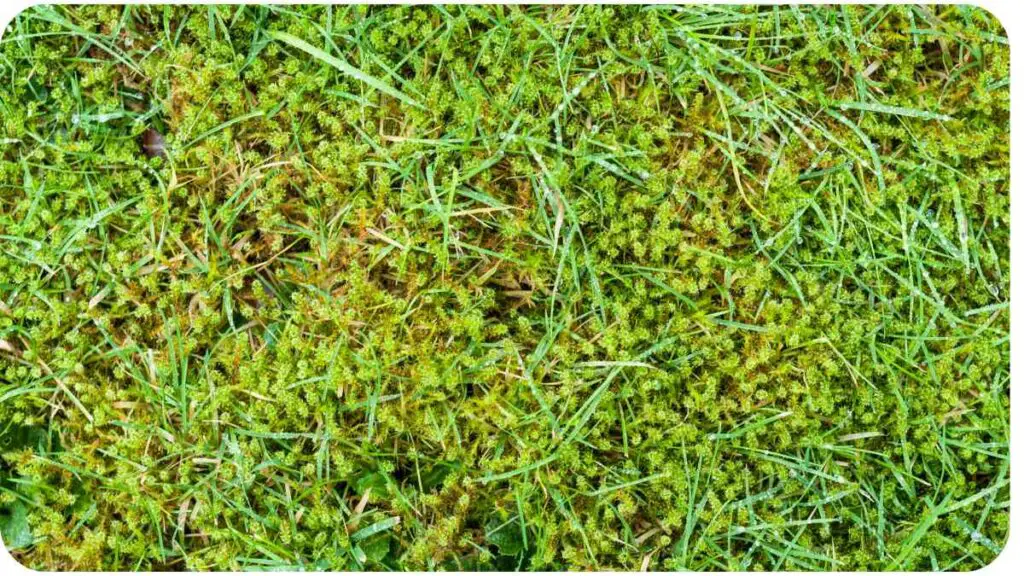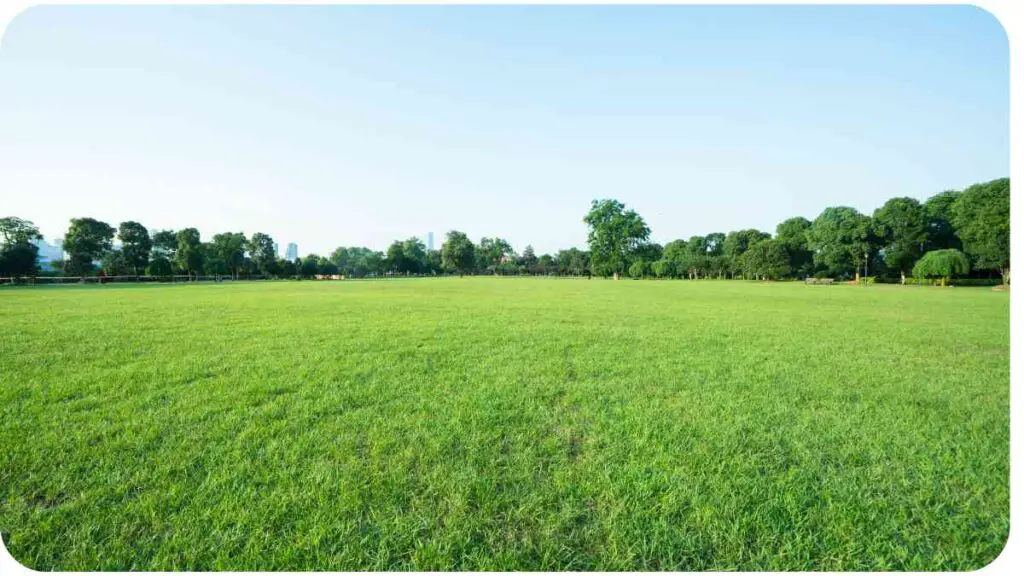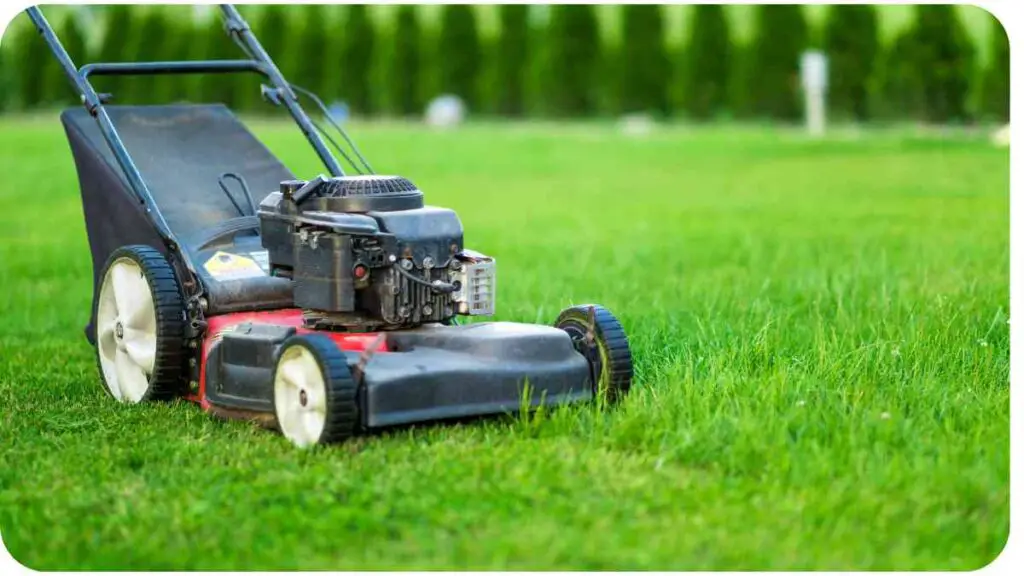Moss lawns are a unique and low-maintenance alternative to traditional grass lawns, offering a lush, green carpet that’s easy on the eyes and the environment. However, like any living ground cover, moss lawns can experience issues, with patchy growth being a common concern.
If you’ve noticed unsightly bald spots or uneven patches in your moss lawn, you’re not alone. Understanding why these patches occur and how to address them can restore your moss lawn to its former glory.
| Key Takeaways |
|---|
| Moss lawns can suffer from patchy growth due to poor soil conditions, environmental factors, or incorrect moss variety. |
| Regular soil testing and adjustments can help maintain optimal pH and moisture levels for healthy moss growth. |
| Moss prefers shaded, cool, and humid conditions; excessive sunlight and extreme temperatures can stress it. |
| Proper maintenance, including regular watering and debris removal, is crucial for a lush, green moss lawn. |
| Replanting moss and choosing the right varieties for your conditions can effectively address and prevent patchy growth. |
Understanding Moss Lawns

Moss is a hardy plant that thrives in various conditions where grass might struggle. It grows slowly but steadily, creating a dense, green mat that requires minimal upkeep. However, even the toughest moss can fall victim to patchy growth if the right conditions aren’t met.
To address issues with uneven growth, it’s crucial to understand the underlying causes. Learn more about effective strategies to combat these issues in our detailed guide on troubleshooting uneven lawn growth. This will help you achieve a more uniform lawn.”
Why Patchy Growth Occurs
Patchy growth in moss lawns can be attributed to several factors, including poor soil conditions, inadequate light, and environmental stress. Identifying the root cause is crucial for effective remediation. Let’s dive into the common causes and how to address them.
Identifying the Cause of Patchy Growth
Common Causes of Patchy Growth
- Soil Conditions: Moss requires specific soil conditions to thrive. Imbalances in soil pH or drainage issues can lead to patchy growth.
- Environmental Factors: Excessive shade or direct sunlight can negatively impact moss. The right balance is essential for healthy growth.
- Moss Variety: Not all moss types are suited for every environment. Choosing the right variety can make a significant difference.
Diagnosing Issues in Moss Lawns
To address patchy growth effectively, start by diagnosing the issues. Look for patterns in the affected areas. Are patches occurring in shady spots or areas with poor soil? This can provide clues about the underlying problem.
Assessing Soil Conditions
Soil pH Levels
Moss generally prefers acidic soil with a pH between 5.0 and 6.0. If your soil is too alkaline, it can hinder moss growth. Use a soil pH meter or test kit to determine your soil’s acidity.
Maintaining a lush, green lawn requires the right techniques. Discover essential tips for keeping your lawn healthy in our article on proven lawn care strategies. These insights can help address patchy growth effectively.
Soil Moisture Content
Moss thrives in moist environments. If the soil is too dry or too wet, it can lead to patchy growth. Regularly check soil moisture levels to ensure they are within the optimal range.
Table: Soil Conditions and Their Impact on Moss Growth
| Soil Condition | Optimal Range | Impact on Moss Growth |
|---|---|---|
| pH Level | 5.0 – 6.0 | Promotes healthy growth |
| Moisture Content | Moderate to High | Essential for moss health |
| Drainage | Well-drained soil | Prevents waterlogging |
Environmental Factors
Light and Shade
Moss can tolerate low light but struggles in direct sunlight. Ensure your moss lawn is in a shaded area or has some protection from harsh sun.
Temperature and Humidity
Moss prefers cool and humid conditions. Extreme temperatures or dry spells can cause stress and patchiness. Maintaining consistent humidity levels can help keep your moss healthy.
Table: Environmental Factors Affecting Moss Growth
| Environmental Factor | Optimal Condition | Impact on Moss Growth |
|---|---|---|
| Light | Partial to full shade | Prevents sunburn and dryness |
| Temperature | Cool to moderate | Avoids stress and dormancy |
| Humidity | High | Supports continuous growth |
Correcting Soil Issues
Adjusting Soil pH
If your soil is too alkaline, you can lower the pH by adding sulfur or acidic fertilizers. Test the soil regularly to monitor changes.
If you’re dealing with brown patches in your lawn, it’s important to identify the causes. Our guide on brown patches in lawns provides useful information to help you resolve these issues and restore your lawn’s health.
Improving Soil Drainage
For poorly drained soil, consider adding organic matter or improving the landscape grading to enhance water flow and prevent waterlogging.
Table: Soil Amendments and Their Benefits
| Amendment | Purpose | Benefit |
|---|---|---|
| Sulfur | Lowers soil pH | Creates an acidic environment for moss |
| Organic Matter | Improves drainage | Enhances soil structure and aeration |
| Lime | Raises soil pH (if too acidic) | Balances soil acidity |
Managing Environmental Conditions
Enhancing Light Conditions
If shade is insufficient, consider thinning nearby trees or installing shade cloths to provide the ideal light conditions for moss.
Regulating Temperature and Humidity
Using a misting system or regular watering can help maintain appropriate humidity levels. Avoid using sprinklers that might overwater.
For comprehensive advice on maintaining a beautiful lawn year-round, check out our resource on essential lawn care tips. This guide offers practical solutions that can also benefit your moss lawn.
Table: Strategies for Environmental Management
| Strategy | Purpose | Benefit |
|---|---|---|
| Shade Cloths | Provide controlled shade | Protects moss from excessive sun |
| Misting Systems | Increase humidity | Supports moss growth in dry conditions |
| Pruning Trees | Improve light conditions | Allows more light to reach moss |
Moss Care and Maintenance

Regular Moss Maintenance Practices
Regularly remove debris and avoid foot traffic on the moss to prevent compaction and damage. Light raking can help maintain an even surface.
Proper Watering Techniques
Water your moss lawn evenly and avoid overwatering. Moss prefers a moist environment, but too much water can lead to problems.
Table: Moss Maintenance Schedule
| Task | Frequency | Purpose |
|---|---|---|
| Debris Removal | Weekly | Keeps moss clean and healthy |
| Light Raking | Monthly | Maintains even growth |
| Watering | As needed | Ensures proper moisture level |
Replanting Moss
How to Replant Moss
To replant moss, carefully remove it from a healthy area and transfer it to the affected spots. Press it down gently to ensure good contact with the soil.
Best Moss Varieties for Your Lawn
Choose moss varieties suited to your local climate and soil conditions. Some popular options include Cushion Moss and Sheet Moss.
Table: Moss Varieties and Their Characteristics
| Moss Variety | Characteristics | Ideal Conditions |
|---|---|---|
| Cushion Moss | Forms dense, cushion-like clumps | Shade, moist soil |
| Sheet Moss | Grows in a flat, spreading mat | Partial shade, well-drained soil |
Long-Term Moss Lawn Care

Developing a Maintenance Plan
Create a regular maintenance schedule to ensure consistent care. Include tasks like checking soil conditions, watering, and removing debris.
Understanding how to manage color loss in ornamental grasses can provide valuable insights into overall lawn care. Explore effective solutions in our article on addressing color loss, which can help improve the appearance of your moss lawn.
Preventing Future Patchy Growth
Addressing the causes of patchy growth and following a maintenance plan will help prevent future issues. Regularly monitor your moss lawn to catch problems early.
Table: Long-Term Care Checklist
| Task | Frequency | Purpose |
|---|---|---|
| Soil Testing | Annually | Monitors pH and nutrient levels |
| Moss Inspection | Monthly | Identifies early signs of problems |
| Regular Watering | As needed | Maintains optimal moisture levels |
Conclusion
Maintaining a lush, green moss lawn is achievable with the right care and attention. By understanding and addressing the causes of patchy growth, you can restore your moss lawn to its full potential. Keep up with regular maintenance and environmental management to ensure your moss lawn remains healthy and vibrant.
Further Reading
For more in-depth information on moss lawn care and remedies, check out these resources:
- Restoring a Lawn from Moss
Learn practical steps and techniques for reviving a moss-covered lawn, including soil and environmental adjustments. - Extension FAQ on Moss in Lawns
This resource provides expert advice on managing moss in lawns, addressing common questions and offering solutions. - RHS Guide on Moss on Lawns
Explore guidelines and tips from the Royal Horticultural Society for dealing with moss in lawns, including prevention and treatment strategies.
FAQs
What causes patchy growth in moss lawns?
Patchy growth in moss lawns can be caused by various factors including poor soil conditions, inadequate light, excessive moisture, or incorrect pH levels. Identifying and correcting these issues is key to restoring a healthy moss lawn.
How can I improve soil conditions for moss growth?
To improve soil conditions for moss, you should ensure proper pH levels (ideally between 5.0 and 6.0), enhance soil drainage, and maintain appropriate moisture levels. Using soil amendments like sulfur can help adjust pH, and adding organic matter can improve drainage.
What environmental factors affect moss growth?
Moss growth is influenced by light conditions, temperature, and humidity. Moss thrives in shaded, cool, and humid environments. Excessive sunlight or extreme temperatures can stress the moss and lead to patchy areas.
How often should I water my moss lawn?
Moss lawns should be watered evenly and regularly to maintain adequate moisture. However, avoid overwatering as it can lead to waterlogging. Aim for a consistent moisture level to keep the moss healthy and vibrant.
What are some common moss varieties used in lawns?
Common moss varieties include Cushion Moss and Sheet Moss. Cushion Moss forms dense clumps and is suitable for shaded, moist areas, while Sheet Moss spreads in a flat mat and is ideal for partial shade and well-drained soils.

Hi! My name is Hellen James, and I’m a landscape designer in Los Angeles. I’ve been working with homeowners and businesses to help them improve the look of their properties for over 10 years.

